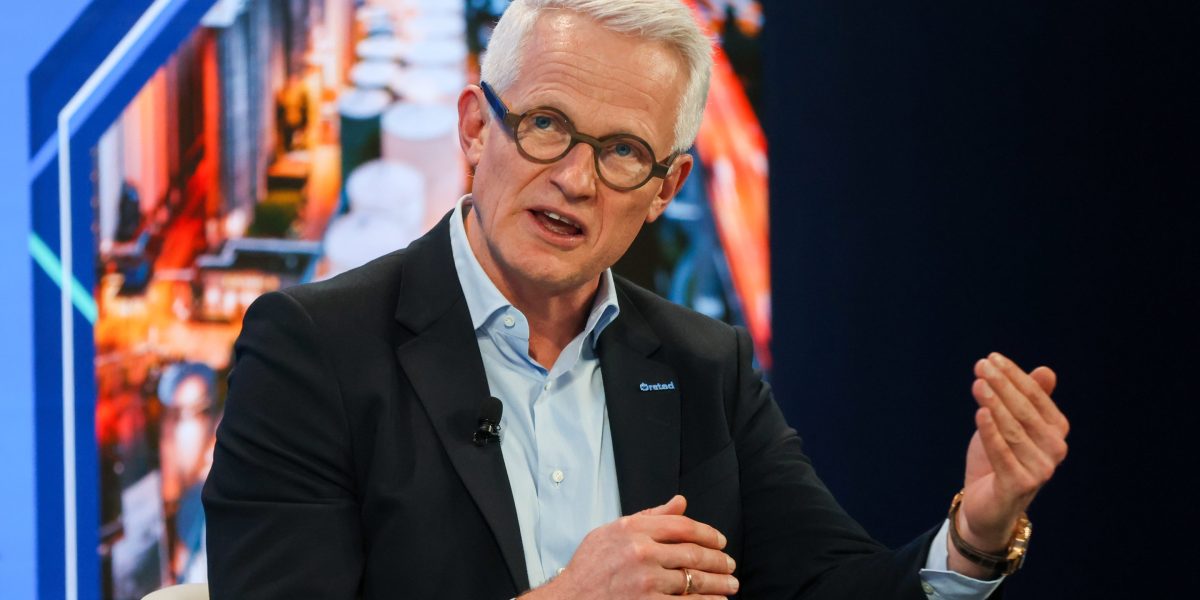Equinor ASA acquired a $2.5 billion stake in Danish wind energy giant Orsted A/S, pairing one of the Nordic region’s biggest fossil fuel companies with its largest renewable power developer.
The deal with Equinor marks one of the most prominent endorsements of the beleaguered offshore wind industry in years, just as falling interest rates and easing supply chain bottlenecks brighten the outlook for renewable technology key to Europe’s climate goals. Shares in Orsted jumped as much as 8% on the news.
The transaction comes at a critical time for the giant wind developer as Chief Executive Officer Mads Nipper tries to execute a turnaround plan after the company recorded billions of dollars of write downs last year due to troubles with offshore wind farms in the US.
“The offshore wind industry is currently facing a set of challenges, but we remain confident in the long-term outlook for the sector, and the crucial role offshore wind will play in the energy transition,” Anders Opedal, Chief Executive Officer of Equinor said in a statement.
The deal gives Equinor a nearly 10% stake in Orsted, making it the second largest shareholder after the Danish government, according to a statement. Equinor doesn’t intend to increase its shareholding any further for now, won’t seek board seats and says it’s supportive of Orsted’s strategy and management.
For Equinor, it’s a simple way to boost its renewable power portfolio. The company has a target of 12 to 16 gigawatts of green power capacity by 2030. Shares in the gas giant fell as much as 3%.
“Equinor gets access to net 1 gigawatt in operating assets for $2.5 billion, which is similar to the cost of building offshore wind projects – without the risk on construction and delivery, as well as supply chains,” Biraj Borkhataria, head of energy research at RBC Europe Ltd.
Orsted is trying to claw its way back to growth. Shares soared during the pandemic as rock-bottom interest rates and a frenzy of green investing pushed its market value to nearly $94 billion in early 2021, just as Nipper took over as CEO. When borrowing costs soared, projects that Orsted was planning to develop looked more expensive forcing the company to writedown and exit several sites in the US.
The company canceled two major American projects and fired top executives. Investors fled, sending the company’s shares down so low that the Orsted was at one point worth less than the sum of its operating wind farms.
Nipper responded in February with a turnaround plan that axed the company’s dividend, laid off staff and cut its plans to grow this decade. The company has gradually regained value this year, though it’s still worth far less than before the crisis last year.

